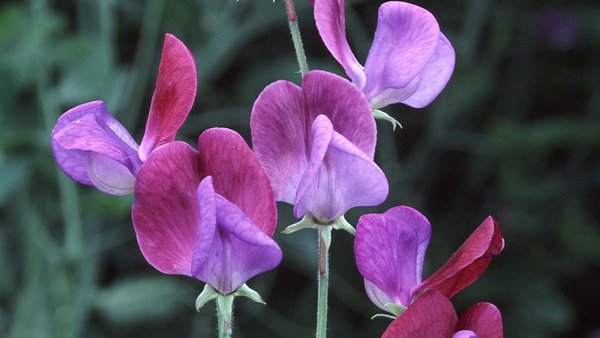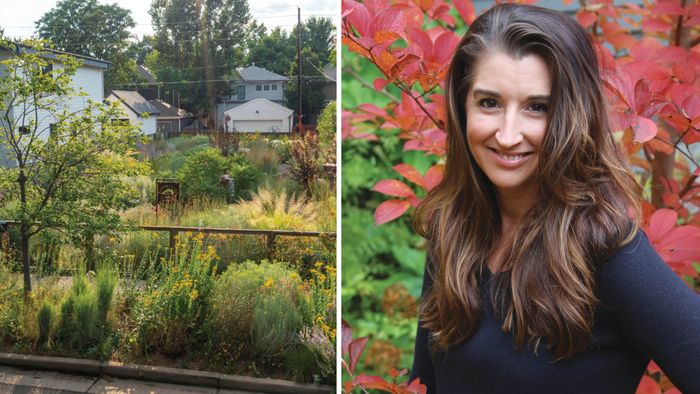
Few annuals deliver the trifecta that sweet peas (Lathyrus odoratus, annual) do. Fragrance and old-fashioned charm go a long way when it comes to cut flowers, but absolutely no flower can compete with the color palette of sweet peas, which ranges from bright poppy, warm coral, and watermelon shades to most every tint of lavender, periwinkle, and deep violet. Even with their short season of abundant bloom, one never tires of their beauty and scent in vases and in the garden.

Spencer varieties
There are a number of different sweet pea varieties to choose from, and each one has its benefits. The Spencer varieties are considered superior for stem length and flower size. These are the varieties competitive sweet pea growers in England raise, but they are a bit more difficult to find in most North American seed catalogs. Some specialty catalogs carry a few, but by far the largest selection and newest varieties of Spencer sweet peas come from the British sweet pea growers, and many ship to North America.

The Spencer ‘Sir Jimmy Shand’ sweet pea is a 2008 introduction from England that is not only a top exhibition flower but a favorite with flower arrangers. Creamy white flowers seem airbrushed with an intense lilac tint on the edges. It performs very well in the Northeast, with vines often reaching 9 feet tall in my garden. In America and Canada, far more common are the grandiflora hybrids and many antique and heirloom strains. ‘Burnished Bronze’ is another Spencer variety that is more resistant to spotting from rain and had larger flowers than other darkly colored sweet peas. It was bred by Sydney Harrod in the United Kingdom and introduced in 1994. It can be ordered from Owl’s Acre Seed in England.

Heirloom varieties
Many gardeners find the antique varieties charming, such as ‘Cupani’ and ‘Painted Lady’, which are hundreds of years old. While each has an intriguing backstory, know that these plants produce smaller blooms. Despite that, the blooms are great in number and are often packed with fragrance. Harder to find but worth seeking out for containers are some older dwarf and Knee High strains from the early to mid-20th century. They grow best where summer temperatures remain cool, however. Dwarf sweet peas were all the rage in 1910 when the variety ‘Cupid’ was introduced. Modern breeders are back-breeding to reinvigorate the genetics of this and other dwarf and semi-dwarf varieties such as the Knee High varieties. These low-growing sweet peas perform very well in containers and window boxes as long as they don’t have any competition and if blooms are deadheaded.

Best sources
In the United States, Renee’s Garden and Select Seeds carry many heirloom and some Spencer varieties. The newest exhibition varieties come from modern breeders such as Roger Parsons in the United Kingdom and Dr. Keith Hammett in New Zealand, who also carry some unusual annual species and improved strains of the nearly lost dwarf varieties.
See More:
See Part I: Sweet Pea Growing Guide
—Matt Mattus is a lifelong gardener and vice president of the Worcester County (Mass.) Horticultural Society. He’s written two books: Mastering the Art of Flower Gardening and Mastering the Art of Vegetable Gardening.



















Comments
Log in or create an account to post a comment.
Sign up Log in